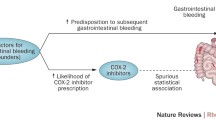Abstract
In clinical studies for disorders such as rheumatoid arthritis, type 2 diabetes mellitus, multiple sclerosis, osteoporosis, etc, sometimes the developers need to address safety concerns (eg, cardiovascular risk) in the phase III development, so that a large long-term safety study is needed before registration. This article does not contain any studies with human or animal subjects performed by any of the authors. Aiming for potential regulatory approval with a single confirmatory study, the authors suggest a design that assesses short-term efficacy (eg, signs or symptoms) and long-term efficacy (eg, structure or imaging), as well as safety (eg, major adverse cardiac events), for which a group sequential test is performed applying an alpha spending function. A graphical testing procedure is suggested for the data analysis. The testing procedure controls the family-wise type I error rate. The study may reach all or part of short-term efficacy, long-term efficacy, and/or safety objectives. It is possible to get market approval with a single confirmatory study that assesses short-term efficacy, long-term efficacy, and safety.
Similar content being viewed by others
References
Bretz F, Maurer W, Brannath W, Posch M. A graphical approach to sequentially rejective multiple test procedures. Stat Med. 2009;28:586–604.
Maurer W, Bretz F. Multiple testing in group sequential trials using graphical approaches. Stat Biopharm Res. 2013;5:311–320.
Xi D, Tamhane AC. Allocating recycled significance levels in group sequential procedures for multiple endpoints. Biomet J. 2015;57:90–107.
FDA. Guidance for industry: Providing Clinical Evidence and Effectiveness for Human Drug and Biologic Products. 1998.
DeMets DL, Lan G. The alpha spending function approach to interim data analyses. In: Thrall PF, ed. Recent Advances in Clinical Trial Design and Analysis. Boston, MA: Kluwer Academic; 1995:1–27.
Ye Y, Li A, Liu L, Yao B. A group sequential Holm procedure with multiple primary endpoints. Stat Med. 2013;32:1112–1124.
O’Brien PC, Fleming TR. A multiple testing procedure for clinical trials. Biometrics. 1979;35:549–556.
FDA Guidance to Industry. Diabetes mellitus—Evaluating cardiovascular risk in new antidiabetic therapies to treat type 2 diabetes. http://www.fda.gov/downloads/Drugs/GuidanceComplianceRegulatoryInformation/Guidances/ucm071627.pdf. Published 2008.
Cytel Statistical Software. East Version 6.4: User Manual. Cambridge, MA: Cytel Software Corporation; 2016.
Hintz JL. PASS 2008 User’s Guide. Kaysville, UT: NCSS; 2008.
Munzel U, Hauschke D. A nonparametric test for proving noninferiority in clinical trials with ordered categorical data. Pharm Stat. 2003;2:31–37.
Sun H, Kawaguchi A, Koch GG. Analyzing multiple endpoints in a confirmatory randomized clinical trial—an approach that addresses stratification, missing values, baseline imbalance and multiplicity for strictly ordinal outcomes. Pharm Stat. 2017;16:157–166.
Mease PJ, McInnes IB, Kirkham B, et al. Secukinumab inhibition of interleukin-17a in patients with psoriatic arthritis. N Engl J Med. 2015;373:1329–1339.
Gladman DD, Mease PJ, Ritchlin CT, et al. Adalimumab for long-term treatment of psoriatic arthritis: forty-eight week data from the adalimumab effectiveness in psoriatic arthritis trial. Arthritis Rheum. 2007;56:476–488.
van der Heijde D, Landewé RB, Mease PJ, et al. Brief report: secukinumab provides significant and sustained inhibition of joint structural damage in a phase III study of active psoriatic arthritis. Arthritis Rheumatol. 2016;68:1914–1921.
Author information
Authors and Affiliations
Corresponding author
Rights and permissions
About this article
Cite this article
Yuan, J., Mesenbrink, P., Zhou, J. et al. Clinical Study Design to Assess Both Short- and Long-term Efficacy in Addition to Group Sequential Test on Safety. Ther Innov Regul Sci 52, 690–695 (2018). https://doi.org/10.1177/2168479018759660
Received:
Accepted:
Published:
Issue Date:
DOI: https://doi.org/10.1177/2168479018759660




